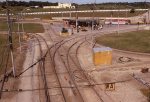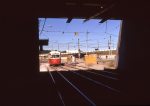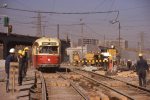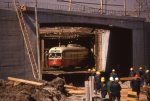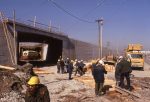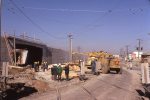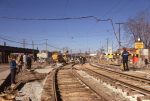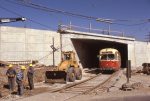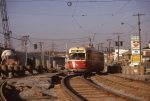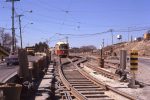Updated June 27, 2019 at 6:00 am:
Metrolinx has announced that the 38 bus routes, previously cut in the name of “efficiency”, will continue to operate two trips in each of the peak periods. See the end of this article for details.
On June 27, 2019, the Metrolinx Board will meet to consider various items including their 2019-2020 Business Plan and 2018-2019 Draft Annual Report. This will be a challenging year for Metrolinx because its subsidy will fall from the budgeted level of $467 million in 2018-19 to $321.2 million in 2019-20 thanks to the machinations of the Ford government. (The amount provided in the 2018-19 government spending estimates was even higher than Metrolinx’ budget figure at $505 million, but actual requirements were lower.)
There was no press release or photo op announcing this change, and it was buried in the detailed estimates for the Ministry of Transportation. Funding for Metrolinx operating subsidies appears under “Vote 2702” within the estimates.
For 2018-19, this contained many more entries than the following year:
Urban and Regional Transportation
Salaries and wages $ 6,744,300
Employee benefits 834,500
Transportation and communication 305,600
Services 13,638,700
Transfer payments
GGRA – Electric Vehicle Education
and Awareness $ 4,919,000
GGRA - Transportation Demand
Management Funding Program 1,000,000
Community Transportation Grant
Program 3,000,000
GGRA - Other 8,000,000
Metrolinx Operating Subsidies 505,290,600
Electric Vehicle Incentive
and Infrastructure Program 102,774,100
GGRA - Green Commercial
Vehicle Program 24,616,000
Ontario Seniors Public Transit
Tax Credit 9,700,000
Participation and Awareness Grants 450,000
$659,749,700
Subtotal $681,272,800
Less: recoveries ( 173,832,200)
Total operating expense to be voted $507,440,600
The corresponding list for 2019-20 is much shorter and smaller. The Metrolinx subsidy has fallen, the green subsidies are gone, and there is an unexplained cut in the Seniors Public Transit Tax Credit.
Urban and Regional Transportation
Salaries and wages $ 780,100
Employee benefits 96,600
Services 189,800
Transfer payments
Metrolinx Operating Subsidies $321,214,300
Ontario Seniors Public Transit
Tax Credit 3,578,600
Participation and Awareness Grants 450,000
$325,242,900
Total operating expense to be voted $326,309,400
Last week, I asked Metrolinx how they planned to deal with this cut, but they are still looking into it. Meanwhile, the reports before the Metrolinx Board give some indication of what is happening.
The table below consolidates information from the Annual Report for 2018-19 and the Business Plan for 2019-20.
Notes:
- Capital lines such as contributions from the province and amortization of existing assets have been removed to show only the operating revenues and expenses.
- Presto fee revenue projections for 2018-19 are not available because Metrolinx did not publish a Business Plan for that year. Actual results are shown separately in a chart on page 26 of the Annual Report.
- UPX service was consolidated with GO Transit operations a few years ago and its financial results are not reported separately.

[The same table as a PDF: 2019V2018_BudgetAndPlan]
2018-19 Results
Thanks to a better-than-budgeted year in 2018-19, Metrolinx is already one step ahead of the game, at least on a budget-to-budget basis. This is not unlike the situation commonly seen at the TTC where the actual results are better than budget, and this gives a leg up on the following year’s requirements.
Fare revenue was 5.1% above budget, although other revenues were below budget giving an overall increase of only 3.2%.
The wide take-up of Presto by TTC riders with the elimination of legacy fare media drives a big jump in Presto fee revenue for 2019-20. A comparable jump in revenue will not be available in future years to offset rising costs. However, Presto operating costs have come down a lot. This is good to see, but such drops cannot be reproduced indefinitely for future savings.
PRESTO will also continue its work on the ambitious objectives of delivering new forms of payment (PRESTO Tickets) and reducing its operational costs by 25%. These will remain focus areas heading into the new fiscal year with significant progress having been made on these objectives to date. In 2018-19, twelve cost savings initiatives were identified and savings targets for the year were achieved with the largest contributor being vendor consolidation and maintenance optimization. Moving forward, PRESTO’s 2019-20 operating budget is already reduced by the 25% cost savings and PRESTO will include the execution and realization of savings from many of the remaining opportunities. [Annual Report, p 41]
Metrolinx may be considering a shift of more front line support to transit clients (e.g. the TTC). This could improve maintenance turnaround times, but also would represent a transfer of costs between vendor and client.
Payment Equipment: Over time, reduce PRESTO’s role in managing equipment, focusing on facilitating transit agencies to directly purchase fare equipment and associated services. [Annual Report, p 43]
On the expense side, the total was only 0.7% over budget although this was achieved by a variety of reductions offset by a large increase in “Supplies and Services” which includes consulting fees.
Although there was a budget of $508.1 million for required subsidy, the net amount came in at $494.9 million.
Of particular note in 2018-19 is the considerable over-budget spending on “Supplies and Services” which includes consulting contracts. This was mostly offset by underspending on Operations, Equipment Maintenance and Facilities & Track.
2019-20 Budget and Plan
For 2019-20, fare revenue is expected to grow by 16.7% over the previous year’s budget amount, or 10.7% over the actual results. This comes from a projected 7.7% rise in ridership over 2018-19 actual results plus the effect of the current year fare increase. Fares account for about three quarters of total operating revenue, and overall results, as on the TTC, can be influenced by how closely Metrolinx hits its ridership expectations.
What is less clear is how any ridership growth will interact with proposed fare improvements including reduced costs for short trips and better co-fares with local operators, notably the TTC. Although Metrolinx crows about how Presto “enables” various discounts, these are not available to all riders.
- Users of the UPX, the much more frequent service in the Weston corridor, recently lost their fare discount for trips transferring to/from the TTC, as well as their monthly loyalty fare cap.
- TTC riders who travel with monthly or yearly passes on Presto do not receive any discount for GO+TTC trips.
- Co-fare discounts for seniors and students are lower than for adults, and as with adult riders, these do not apply to pass holders, only to full single fare rides.
If there is any move to better “integrate” fares for all riders, not just those paying full fare, this will be a cost either to Metrolinx or to local transit systems depending on the cost sharing arrangement. Metrolinx’ attitude to subsidies for fare reductions is that this takes money from service provision, and they expect other transit agencies to benefit from added ridership and, by implication, to provide fare subsidies at the local level.
The budget also includes one-time revenue of $40 million for sale of surplus assets. Although this helps to reduce the call on subsidies, it creates a gap that will have to be backfilled with other savings or revenues in future years. The Business Plan describes this revenue as supporting the Transit Oriented Development Program, and yet its actual effect is to reduce the operating subsidy.
On the expense side, there will be a big drop in “Supplies and Services” over previous year actuals, but a smaller drop on a budget-to-budget basis because of the overrun in 2018-19. Spending on “Facilities and Track” will also fall in the coming year. It is unclear whether this represents a reduction in the quantity and quality of maintenance, or if some sort of “efficiency” program is underway.
The various categories of expense and revenue are described in the Business Plan:
In the 2019-20 operating budget, the largest allocation is operations expense, which accounts for 35% of the total operating budget. This includes items such as support train crew wages, train control dispatch and PRESTO operations.
Next, labour and benefits account for 30% of the operating budget, supporting transit ridership growth. Facilities and tracks account for 13% of the operating budget, and include rent, property taxes, hydro, winter maintenance and other facility repairs. Equipment maintenance accounts for 11%, covering support services, inventory, inspections and yard operations. Finally, supplies and services represent 11% of the budget, which includes all types of professional services, bank fees, staff development and advertising.
Transit operations fare revenue is based on a year-over-year increase in ridership and GO fare changes implemented on April 20, 2019.
Non-fare revenue sources typically include billboard advertising, track usage fees from corridor ownership, transit operations partnerships on UP Express line, interest on working capital and reserved parking fees. In addition to these more typical sources of non-fare revenue, the total PRESTO fee revenue and proceeds from sale of assets to support the Transit Oriented Development Program are projected to be $107.2 million and $40.0 million for 2019-20, respectively. [p 62]
At a recent Metrolinx Town Hall, the question of the drop in subsidy was raised from the floor, and CEO Phil Verster deflected this by saying that Metrolinx is improving efficiency in the use of its assets. This is not entirely true in that the budget mixes one time and recurring revenues, and depends on strong growth in Presto fees both in the current and future years.
Part of that “efficiency” is the reallocation of services, something that happened recently with the removal of service from a few GO bus routes without notice or consultation. Meanwhile, GO added rail service to Niagara Falls that carries even fewer passengers than the bus services that were cut. Even though there is one train a day each way at hours when almost no ridership is attracted, Metrolinx trumpets this new service as an “accomplishment”. Clearly the political influence over Metrolinx decisions continues from the Liberals into the Conservative government.
Updated June 27: Limited service on the 38 Bolton/Malton service will be preserved pending implementation of a local replacement by the Town of Caledon. See details at the end of the article.
There is a fundamental problem with the overlaps and gaps between GO as a regional operator and local transit systems, where they exist. When GO decides to cut a service, there may be no local route to take up the slack, or it may not provide as convenient a service. This shows the degree to which Metrolinx is unaccountable and is a fundamental issue in “regional integration”. Although they are looking at alternatives such as shuttles with smaller vehicles or autonomous vehicles, the reality is that routes will vanish until Metrolinx gets around to serving the area again.
Videos from Town Hall:
Looking Ahead to 2022
The three year projections for Metrolinx operating revenues and expenses are shown in Exhibit 7 of the Business Plan.
Fare revenue growth is projected at about 7% into 2020-21, and at 5.6% in 2021-22. There is no ridership projection for these years.
Presto fee revenues will also grow, but they will not keep up with projected operating costs. The $37.4 million shortfall in 2019-20 is projected to fall to $16.8m by 2021-22 thanks largely to strong growth in fee revenue. How much of the fee growth will be due to greater takeup of Presto as a fare medium and how much is due to changes in the fee structure for various Presto client systems is not specified.
“Metrolinx Internal” comprises $8.4 million in non-fare revenue plus $40 million from asset sales. It is not clear that the latter amount would actually be available in future years, and in any event this is described above as supporting the TOD program which is part of the Capital Budget, not Operating. This cannot be both a source of operating revenue and contribute to the capital program.
The “Net Operating Requirement” grows by $37.1 million in 2020-21, or 11.8%, but only by $8.4 million or 2.4% in 2021-22. Fare revenue will grow by $90.6 million (13.5%) while transit operating costs will grow by $148.4 million (16.2%). This spread is partly offset by the projected reduction in Presto costs net of fees, but the large growth in fee revenue (36%) is essential to these projections.
The big change in the third year is the “Capital Through Operating” line which consumes almost all of the planned increase in “Operating” subsidy.
What is not shown, at least not explicitly, is the effect of the opening of the Eglinton-Crosstown line planned for fall 2021. This will affect at least six months of the 2021-22 fiscal year for Metrolinx, but there is no indication of the associated costs and revenues, let alone how these might be split between Metrolinx and the TTC.

Updated June 27, 2019 at 6:00 am
Following pushback at the Town Hall on June 24 and intervention by the Mayor of Caledon, Metrolinx has announced that it will retain limited peak service on the 38 GO bus pending implementation of an alternative local service by Caledon. In the best Twitter tradition, there is a typo.
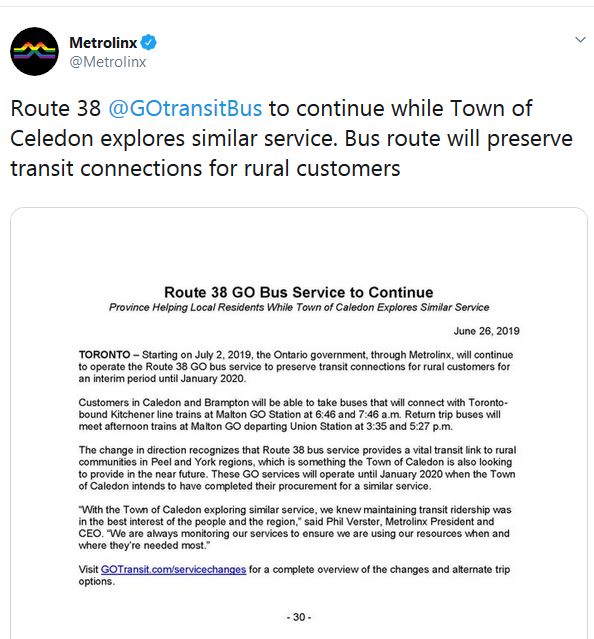
The existing schedule provides 6 and 7 trips on route 38 Bolton/Malton in the AM and PM peak respectively, and 2 in each peak on the 38A Bolton/North York. The new schedule goes into effect on July 2, 2019 and provides only 2 trips in each peak period on the 38, and no service on the 38A. The GO Transit Service Changes page encourages riders to use alternative means to make their trips.
To what extent this is a “victory” for riders remains to be seen with an agency and a government that are deaf to consultation.



